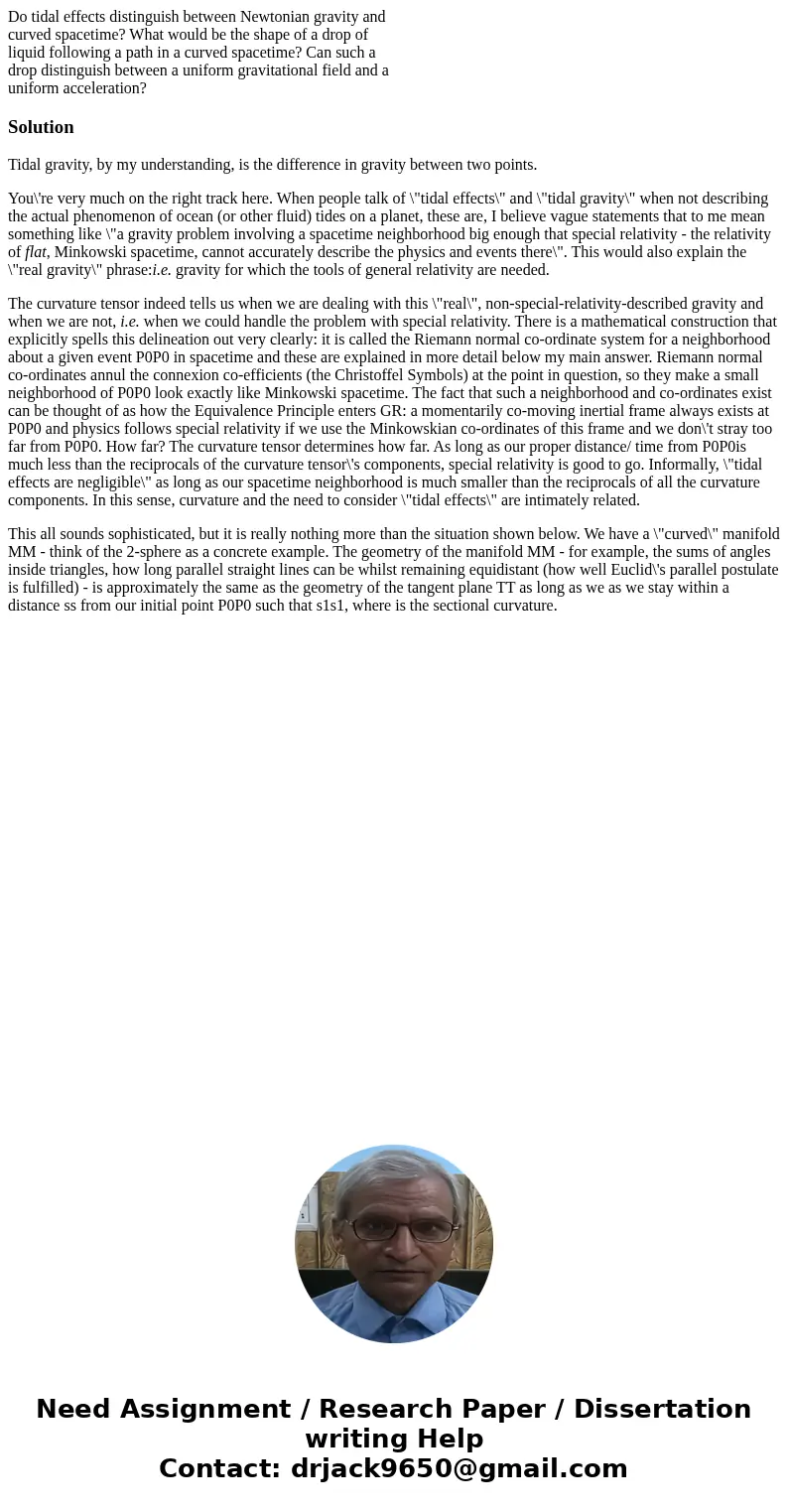Do tidal effects distinguish between Newtonian gravity and c
Do tidal effects distinguish between Newtonian gravity and
curved spacetime? What would be the shape of a drop of
liquid following a path in a curved spacetime? Can such a
drop distinguish between a uniform gravitational field and a
uniform acceleration?
Solution
Tidal gravity, by my understanding, is the difference in gravity between two points.
You\'re very much on the right track here. When people talk of \"tidal effects\" and \"tidal gravity\" when not describing the actual phenomenon of ocean (or other fluid) tides on a planet, these are, I believe vague statements that to me mean something like \"a gravity problem involving a spacetime neighborhood big enough that special relativity - the relativity of flat, Minkowski spacetime, cannot accurately describe the physics and events there\". This would also explain the \"real gravity\" phrase:i.e. gravity for which the tools of general relativity are needed.
The curvature tensor indeed tells us when we are dealing with this \"real\", non-special-relativity-described gravity and when we are not, i.e. when we could handle the problem with special relativity. There is a mathematical construction that explicitly spells this delineation out very clearly: it is called the Riemann normal co-ordinate system for a neighborhood about a given event P0P0 in spacetime and these are explained in more detail below my main answer. Riemann normal co-ordinates annul the connexion co-efficients (the Christoffel Symbols) at the point in question, so they make a small neighborhood of P0P0 look exactly like Minkowski spacetime. The fact that such a neighborhood and co-ordinates exist can be thought of as how the Equivalence Principle enters GR: a momentarily co-moving inertial frame always exists at P0P0 and physics follows special relativity if we use the Minkowskian co-ordinates of this frame and we don\'t stray too far from P0P0. How far? The curvature tensor determines how far. As long as our proper distance/ time from P0P0is much less than the reciprocals of the curvature tensor\'s components, special relativity is good to go. Informally, \"tidal effects are negligible\" as long as our spacetime neighborhood is much smaller than the reciprocals of all the curvature components. In this sense, curvature and the need to consider \"tidal effects\" are intimately related.
This all sounds sophisticated, but it is really nothing more than the situation shown below. We have a \"curved\" manifold MM - think of the 2-sphere as a concrete example. The geometry of the manifold MM - for example, the sums of angles inside triangles, how long parallel straight lines can be whilst remaining equidistant (how well Euclid\'s parallel postulate is fulfilled) - is approximately the same as the geometry of the tangent plane TT as long as we as we stay within a distance ss from our initial point P0P0 such that s1s1, where is the sectional curvature.

 Homework Sourse
Homework Sourse